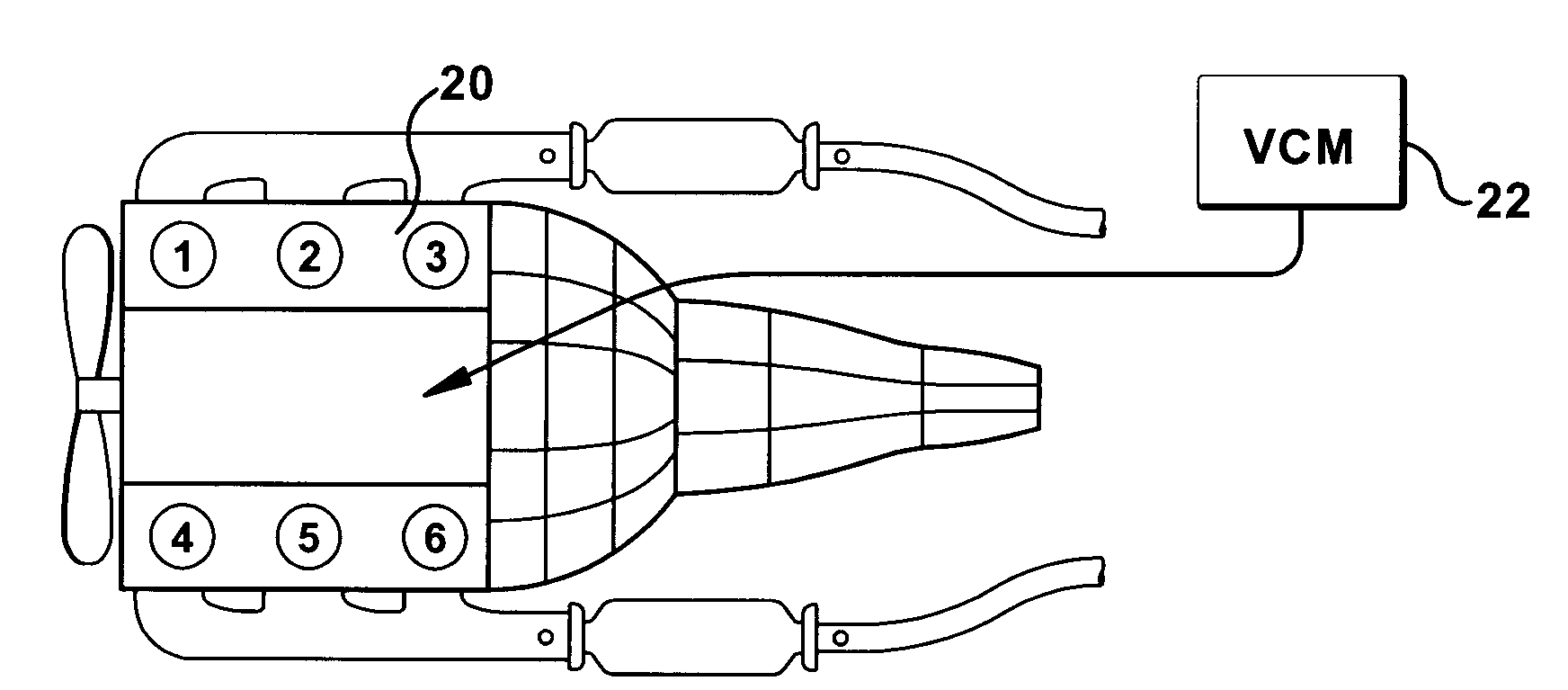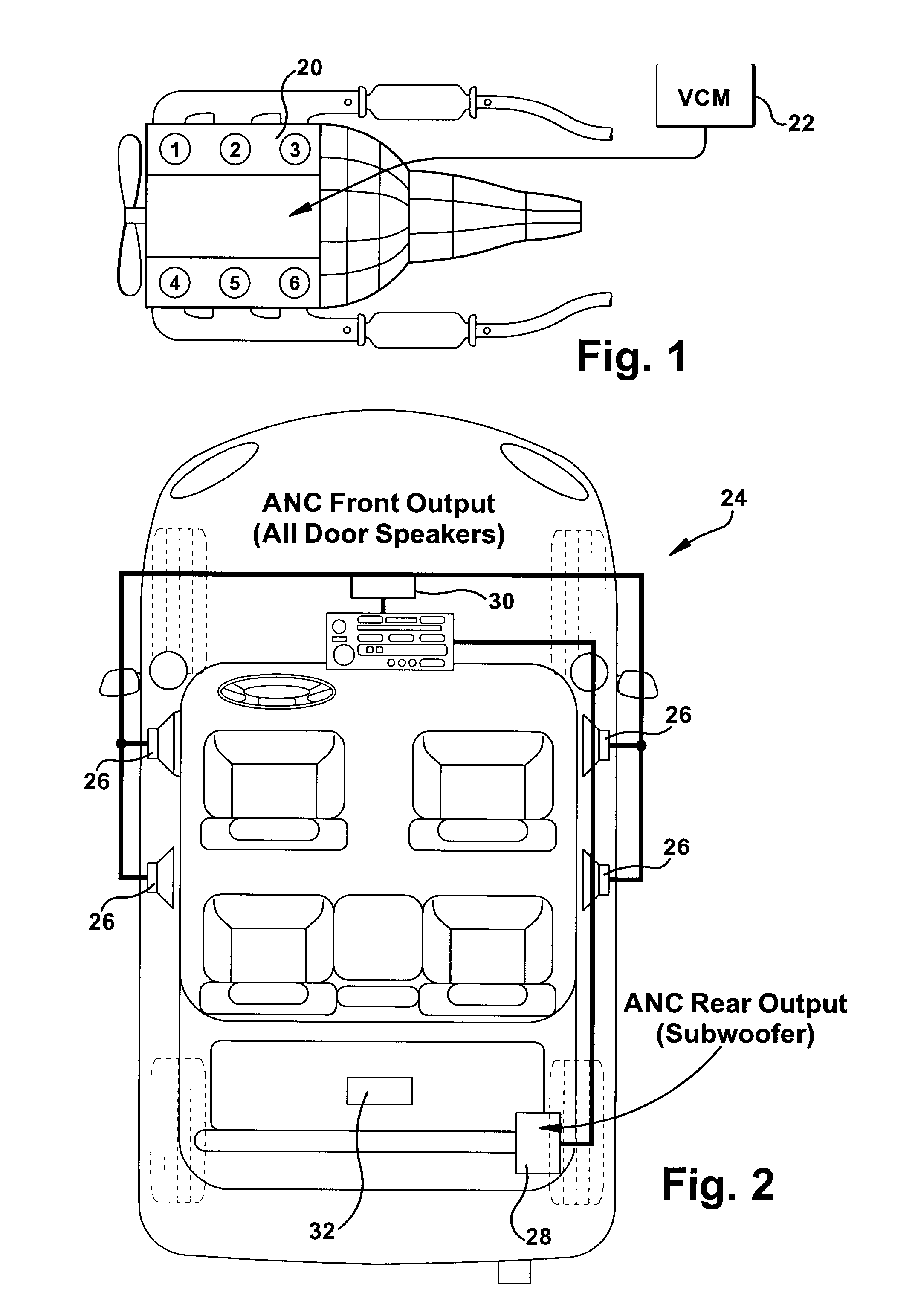Method for reducing noise in a vehicle cabin
a technology for reducing noise and vehicle cabins, applied in noise generation, instruments, ear treatment, etc., can solve problems such as disturbing vehicle occupants, and achieve the effect of accurately canceling actual noise and reducing noise in the vehicle cabin
- Summary
- Abstract
- Description
- Claims
- Application Information
AI Technical Summary
Benefits of technology
Problems solved by technology
Method used
Image
Examples
Embodiment Construction
[0022]As described in more detail below, a method is provided for minimizing vehicle noise when a vehicle utilizing Cylinder De-Activation changes from a smaller number of cylinders utilized to a larger number of cylinders utilized or vise-versa, that includes extending the provision of cancellation sound of a first order for a fixed period of time after changing cylinder utilization modes.
[0023]Referring to FIG. 1, a six cylinder engine 20 in a common V-arrangement (V6), as is used in a typical vehicle, is shown. The engine is controlled with a system called Variable Cylinder Management (VCM) 22. Using this system, the vehicle can run on six, four or three cylinders depending on the road speed and load conditions. When using VCM 22, during start-up, acceleration or when climbing hills, the engine 20 operates on all six cylinders. During moderate speed cruising and at low engine loads, the system operates just one bank of three engine cylinders. For moderate acceleration, higher-spe...
PUM
 Login to View More
Login to View More Abstract
Description
Claims
Application Information
 Login to View More
Login to View More - R&D
- Intellectual Property
- Life Sciences
- Materials
- Tech Scout
- Unparalleled Data Quality
- Higher Quality Content
- 60% Fewer Hallucinations
Browse by: Latest US Patents, China's latest patents, Technical Efficacy Thesaurus, Application Domain, Technology Topic, Popular Technical Reports.
© 2025 PatSnap. All rights reserved.Legal|Privacy policy|Modern Slavery Act Transparency Statement|Sitemap|About US| Contact US: help@patsnap.com



